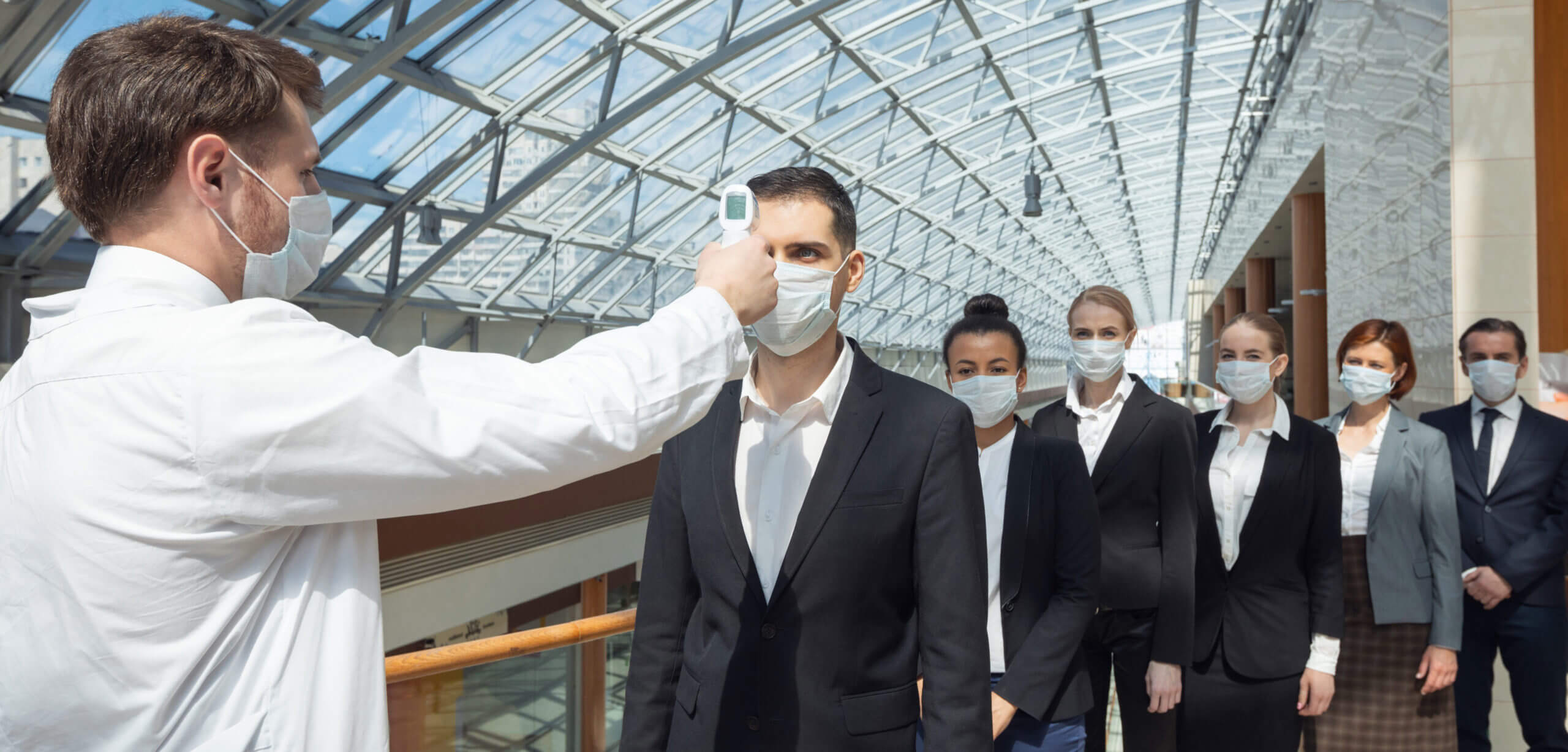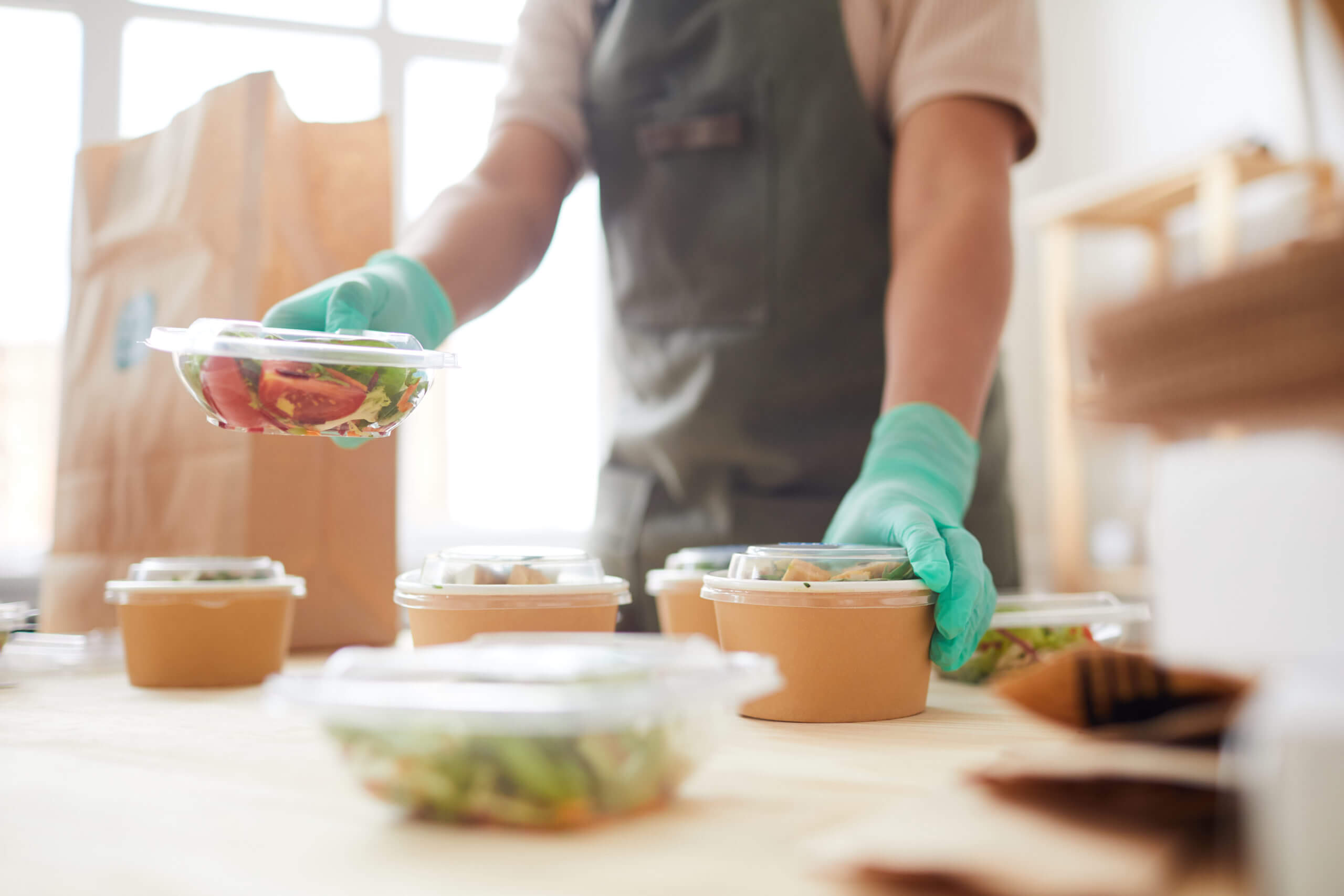Hosting live corporate meetings and in-person events will require quite a few adjustments as the world is adapting to COVID-19’s impact. We’ve already seen how essential businesses have made changes, and those who are safely reopening are building best practices as this all continues to evolve.
Health and safety protocols including sanitation, distancing, foodservice, and contactless interactions seem to be the trend in welcoming patrons back into business. This trend is likely to be followed by corporate meeting planners when it comes to returning to live meetings as well.
Venues for Live Meetings
Venues will change in how they are doing room set up and managing attendance, including reduced room capacity requirements. Thermal scanners to take guest temperatures will be a norm, as well as health question requirements for guests to participate in live events.

Following sanitation guidelines set by the CDC will need to be more forefront. In the past, cleaning crews were behind-the-scenes in removing trash, wiping high-touch areas, and managing food and beverage areas. Now, certain areas may need to be closed for cleaning and sanitation more regularly and cleaning will be done more prominently to give guests the security they desire.
Key takeaways:
- Venues must be ready to have configurations that allow for social distancing including traffic flow and seating.
- Health scans and temperature scanners provide extra security in preventing symptomatic guests from exposing others to the disease.
- Strict and thorough sanitation practices should be in place and communicated to staff and guests.
- Managing room capacity will take a higher priority to support foot traffic flow that follows distancing guidelines.
Food and Beverage
Hospitality and catering will also change, following the trend of service over the buffet. Food and beverage stations will likely remain closed or modified to reduce high touch or crowding. Contactless interactions, and/or masked service as demonstrated by restaurants currently, is the expected norm.

Again, cleanliness and sanitation will be prioritized with single-serve condiments and individually wrapped utensils or food items. Priority should be given to cleaning high-touch areas and limiting contact with other guests not in their party. Personal protective supplies should be available to all guests to be able to meet their own safety needs.
Key takeaways:
- Foodservice should follow trends set in place by the restaurant industry including contactless take-out options and individually wrapped condiments and plasticware.
- Service over buffet-style will likely stay in effect until government agencies deem it safe to return to communal dining.
- Masks (and possibly gloves) should be worn by all hospitality staff.
- Priority needs to be placed on sanitizing eating areas and on hygiene.
Virtual Components
As virtual meeting attendance has boomed in the face of quarantine and lock-downs, more people have become accustomed to using technology in a variety of ways. Virtual components can support live events, allowing them to overcome space challenges, contact restrictions and even travel limitations.

Incorporating virtual components is a way to support the guest experience for the positive. For example, an app can be used allowing for quicker check-ins without the bottlenecks that can threaten social distancing guidelines. Streaming the live event can allow for participants to stay home or in multiple rooms within the venue to create more space between guests.
Technology can be used to create maps, communicate information, and even send alerts.
Key takeaways:
- Virtual components should be leveraged to provide a high level of guest experience while reducing the risks of in-person meetings.
- Technology can support contactless needs such as aiding in check-in, managing room capacity limits, and guest flow.
- Virtual meetings can allow for greater participation in the live event, despite decreased venue space.
- Use technology before, during, and after the event to keep guests engaged in new ways and limit exposure to risks.
As we all begin to adjust to new safety protocols, we are “building the airplane in flight” – discovering best practices and sharing it with others in the industry to create a safer, healthier, and more vibrant experience for participants in the live event space.



